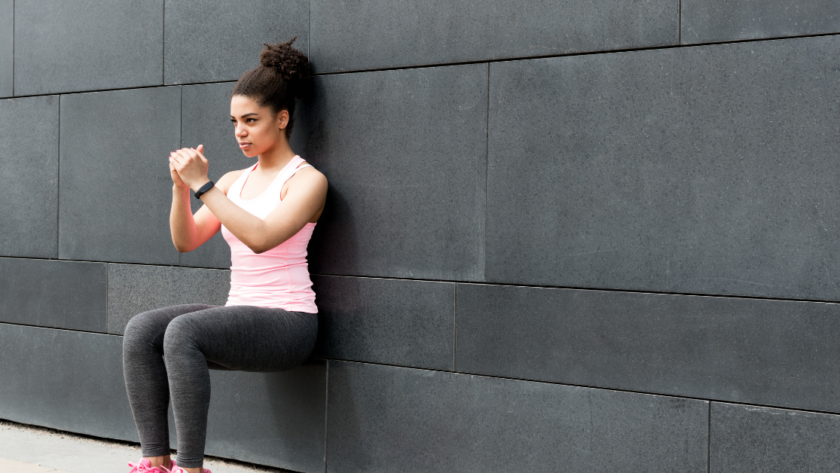As an experienced archer, I’ve seen countless enthusiasts hit plateaus in their skills. They wonder why their scores aren’t improving despite regular shooting sessions.
The answer comes from a comprehensive approach to archery fitness that goes beyond simply drawing a bow.
In this article, we’ll explore a range of exercises and techniques designed to enhance your precision, power, and overall performance in archery.
Whether you’re a beginner looking to build a solid foundation or an experienced archer aiming to take your skills to the next level, these insights will help you achieve your full potential on the range.
The Foundations of Archery Fitness
Archery engages over 50 muscles throughout your body. While it might seem like all the action is in your arms and shoulders, successful archery relies on a complex interplay of muscle groups from head to toe.
The primary muscle groups involved in archery include:
- Back muscles (latissimus dorsi, rhomboids, and trapezius)
- Shoulder muscles (deltoids and rotator cuff)
- Arm muscles (biceps and triceps)
- Core muscles (abdominals and obliques)
- Chest muscles (pectoralis major and minor)
- Leg muscles (quadriceps, hamstrings, and calves)
A well-rounded archery exercise program should focus on strengthening these muscle groups while also improving flexibility, balance, and endurance. Here are specific exercises that can help you achieve this.
Strength Training for Archers
Bow-Specific Exercises
One of the most effective ways to improve your archery performance is through exercises that mimic the movements you’ll use on the range. Here are some key exercises to incorporate into your routine:
Resistance Band Draw
This exercise simulates the drawing motion of your bow using a resistance band. Stand with one foot slightly forward, holding the band in your bow hand.
Draw the band back to your anchor point, hold for a few seconds, and slowly release.
This helps build strength in your back, shoulders, and arms.
I recommend starting with 3 sets of 10 repetitions and gradually increasing as you build strength. Pay close attention to your form, ensuring that you’re engaging your back muscles as opposed to relying solely on your arms.
Isometric Holds
Using your actual bow (unstrung for safety), draw to your anchor point and hold the position for as long as you can. This improves stability and endurance in the muscles used for shooting.
Begin with 3 sets of 10-second holds and work your way up to longer durations. Remember to breathe steadily throughout the hold to maintain control and focus.
Wall Presses
Stand with your back against a wall and press your arms against it in the shooting position. This strengthens your shoulder stabilizers and improves your form.
Start with 3 sets of 10 presses, focusing on maintaining proper alignment throughout the movement. As you progress, you can increase the number of repetitions or add resistance by using a light weight or resistance band.
General Strength Exercises
In addition to bow-specific exercises, general strength training can significantly enhance your archery performance:
Rows
Bent-over rows or seated cable rows target your back muscles, crucial for drawing and holding your bow. Aim for 3 sets of 10-12 repetitions, focusing on squeezing your shoulder blades together at the top of the movement.
Planks
Various plank exercises improve core stability, essential for maintaining a steady shooting stance. Start with 3 sets of 30-second holds and gradually increase the duration as your strength improves.
Remember to keep your body in a straight line from head to heels.
Squats
Building lower body strength helps you maintain a stable shooting position, especially during long competitions or hunting trips. Perform 3 sets of 12-15 squats, focusing on proper form and depth.
As you progress, you can add weight or try variations like single-leg squats for an added challenge.
Push-Ups
These enhance overall upper body strength and stability, benefiting your entire shooting form. Begin with 3 sets of as many repetitions as you can manage with good form.
If traditional push-ups are too challenging, start with modified versions on your knees or against a wall.
Flexibility and Mobility
Flexibility plays a crucial role in maintaining proper form and preventing injury. Incorporate these stretches into your routine:
Shoulder Rotations
Improve shoulder mobility with circular movements, both forward and backward. Perform 10 rotations in each direction, focusing on making the circles as large as possible without causing discomfort.
Wrist Flexor Stretch
Enhance wrist flexibility for better grip control by extending your arm and gently pulling your hand back with the other hand. Hold for 20-30 seconds on each side, repeating 2-3 times.
Thoracic Spine Rotations
Increase upper back mobility for a smoother drawing motion by sitting in a chair and twisting your upper body to each side. Hold each twist for 10-15 seconds, repeating 5 times on each side.
Hip Flexor Stretch
Improve lower body flexibility for a stable stance by lunging forward and sinking your hips. Hold for 30 seconds on each side, repeating 2-3 times.
Remember to keep your front knee aligned with your ankle and your back leg straight.
Balance and Proprioception
Balance is essential for maintaining a steady aim. Try these exercises to improve your stability:
Single-Leg Stance
Practice standing on one leg while mimicking your shooting form. This improves overall balance and strengthens the stabilizing muscles in your legs and core.
Start with 30-second holds on each leg, gradually increasing the duration as your balance improves.
Bosu Ball Exercises
Perform various exercises on an unstable surface to improve overall balance and body awareness. Try squats, lunges, or even mimicking your shooting stance on a Bosu ball.
Start with 3 sets of 10 repetitions for each exercise, focusing on maintaining control throughout the movement.
Yoga
Incorporate yoga poses like Tree Pose or Warrior III to enhance balance and body awareness. These poses improve physical stability and help develop mental focus.
Hold each pose for 30-60 seconds, repeating 2-3 times on each side.
Endurance Training
Archery competitions can be lengthy, requiring sustained focus and physical stamina. Build endurance with:
Cardiovascular Exercise
Engage in activities like jogging, cycling, or swimming to improve overall fitness and stamina. Aim for at least 150 minutes of moderate-intensity cardio per week, or 75 minutes of vigorous-intensity exercise.
High-Volume Shooting Sessions
Practice shooting a high number of arrows in a single session to build stamina specific to archery. Start with 100 arrows per session and gradually increase as your endurance improves.
Focus on maintaining proper form throughout the session.
Interval Training
Alternate between periods of intense activity and rest to improve both aerobic and anaerobic fitness. For example, try 30 seconds of high-intensity exercise (like burpees or mountain climbers) followed by 30 seconds of rest, repeating for 10-15 minutes.
Mental Training
The psychological aspect of archery is just as important as the physical. Incorporate these mental exercises:
Visualization
Mentally rehearse your shot sequence and visualize successful outcomes. This technique can improve your confidence and performance on the range.
Spend 10-15 minutes daily visualizing perfect shots and positive outcomes.
Meditation
Practice mindfulness to improve focus and manage competition stress. Even just 10 minutes a day can make a significant difference in your mental game.
Start with guided meditations if you’re new to the practice, gradually working up to longer, self-guided sessions.
Breathing Exercises
Learn controlled breathing techniques to maintain calmness and steadiness during shooting. Box breathing (inhale for 4 counts, hold for 4, exhale for 4, hold for 4) is a simple yet effective technique.
Practice this for 5-10 minutes daily, especially before shooting sessions or competitions.
Unconventional Training Methods
To keep your training interesting and target different aspects of your archery skills, consider these unique approaches:
Archery Yoga
Combine yoga poses with archery-specific movements for a holistic workout that improves both physical and mental aspects of your game. Create a sequence that flows between yoga poses and archery stances, holding each position for 3-5 breaths.
Blind Bale Shooting
Practice your form without a target to focus on technique and muscle memory. This helps ingrain proper form without the pressure of hitting a specific target.
Spend 15-20 minutes per session shooting at a blank target or bale, focusing solely on your form and release.
Virtual Reality Training
Use VR technology to simulate various shooting scenarios and conditions. This can help you prepare for different competitive environments or hunting situations.
If you have access to VR equipment, try to incorporate 1-2 sessions per week into your training routine.
Cross-Training with Other Sports
Engage in activities like rock climbing or fencing to develop complementary skills such as grip strength, balance, and quick decision-making. Aim to include one cross-training session per week to keep your workouts varied and engaging.
Injury Prevention and Recovery
To maintain long-term archery performance, pay attention to injury prevention and recovery:
Rotator Cuff Exercises
Strengthen the small muscles around the shoulder to prevent common archery injuries. External and internal rotations with light weights or resistance bands are particularly effective.
Perform 3 sets of 12-15 repetitions for each exercise, focusing on controlled movements.
Foam Rolling
Use a foam roller to release muscle tension and improve flexibility, particularly focusing on your back, shoulders, and arms. Spend 5-10 minutes foam rolling after each training session or competition.
Active Recovery
On rest days, engage in light physical activity like walking or gentle stretching to promote blood flow and healing. Aim for 20-30 minutes of low-intensity movement on your rest days.
Proper Nutrition
Fuel your body with a balanced diet rich in proteins for muscle repair, complex carbohydrates for energy, and healthy fats for joint health. Consult with a nutritionist to develop a meal plan tailored to your specific needs as an archer.
Putting It All Together
Now that we’ve covered a wide range of exercises and techniques, you might be wondering how to incorporate them into your training routine. Here’s a sample weekly plan to get you started:
Monday: Strength training (bow-specific and general exercises)
- Resistance Band Draw: 3 sets of 10 reps
- Isometric Holds: 3 sets of 15-second holds
- Wall Presses: 3 sets of 12 reps
- Rows: 3 sets of 10 reps
- Planks: 3 sets of 45-second holds
- Squats: 3 sets of 15 reps
Tuesday: Archery practice and mental training
- 100 arrow shooting session
- 15 minutes of visualization
- 10 minutes of meditation
Wednesday: Flexibility and balance exercises
- Full body stretching routine (15-20 minutes)
- Single-Leg Stance: 3 sets of 45-second holds per leg
- Bosu Ball Squats: 3 sets of 10 reps
- Yoga sequence (20-30 minutes)
Thursday: Endurance training and high-volume shooting
- 30 minutes of cardio (jogging, cycling, or swimming)
- 150 arrow shooting session
Friday: Strength training and injury prevention exercises
- Push-Ups: 3 sets of 12 reps
- Rotator Cuff Exercises: 3 sets of 15 reps for each exercise
- Foam Rolling session (10 minutes)
- Blind Bale Shooting (20 minutes)
Saturday: Competition or extended practice session
- Simulate competition conditions or participate in a local tournament
- If no competition available, perform a 200 arrow shooting session with breaks
Sunday: Active recovery and mental training
- 30-minute walk or light jog
- 20 minutes of yoga
- 15 minutes of meditation
Remember, this is just a template. Feel free to adjust it based on your schedule, goals, and current fitness level.
Common Pitfalls and How to Avoid Them
As you start on this comprehensive training approach, be aware of these common mistakes:
Overtraining
Enthusiasm is great, but pushing yourself too hard too fast can lead to burnout and injury. Gradually increase the intensity and volume of your training.
Listen to your body and allow for proper rest between sessions.
Neglecting Rest
Proper rest and recovery are crucial for improvement. Make sure to include rest days in your schedule and get adequate sleep.
Aim for 7-9 hours of sleep per night to support muscle recovery and mental acuity.
Ignoring Form
In your eagerness to build strength and endurance, don’t neglect proper shooting form. Always prioritize technique over raw power.
Consider working with a coach or using video analysis to confirm you’re maintaining fix form throughout your training.
Skipping Mental Training
It’s easy to focus solely on physical training, but mental preparation is equally important. Make time for visualization and meditation.
Even just 10-15 minutes a day can make a significant difference in your performance.
Inconsistency
Consistency is essential in archery training. It’s better to do a little bit every day than to have sporadic intense sessions.
Try to stick to your training schedule as much as possible, even if it means adjusting the intensity or duration of sessions on busy days.
Pro Tips for Advanced Archers
If you’re already experienced and looking to take your skills to the next level, consider these advanced techniques:
Periodization
Structure your training into specific phases (preparation, competition, transition) to peak at the right times for important events.
This approach allows you to focus on different aspects of your training throughout the year, maximizing your performance when it matters most.
Biomechanical Analysis
Use video analysis or work with a coach to fine-tune your form based on your unique body mechanics. This can help you identify and fix subtle inefficiencies in your technique that might be holding you back from peak performance.
Customized Equipment Tuning
Learn to precisely tune your bow and arrows to match your shooting style and physical characteristics. This might involve experimenting with different draw weights, arrow spine stiffness, or release aids to find the perfect combination for your shooting style.
Advanced Mental Techniques
Explore sports psychology concepts like flow state and anchoring to enhance your mental game. Work with a sports psychologist to develop personalized strategies for managing competition stress and maintaining focus under pressure.
Cross-Training with Precision Sports
Incorporate other precision sports like golf or target shooting to develop transferable skills. This can help improve your overall hand-eye coordination, focus, and ability to perform under pressure.
Key Takeaways
- Archery fitness involves more than just shooting practice – it needs a holistic approach including strength, flexibility, balance, and mental training.
- Incorporate bow-specific exercises alongside general strength training to target the muscles used in archery.
- Flexibility and mobility work are crucial for maintaining proper form and preventing injury.
- Balance and proprioception exercises can significantly improve your stability and accuracy.
- Mental training, including visualization and meditation, is just as important as physical preparation.
- Experiment with unconventional training methods to keep your routine fresh and target different aspects of your skills.
- Pay attention to injury prevention and recovery to confirm long-term success in archery.
- Consistency in training is key – create a balanced weekly routine that includes all aspects of archery fitness.
- Be aware of common pitfalls like overtraining and neglecting proper form.
- For advanced archers, consider techniques like periodization and biomechanical analysis to further refine your skills.
People Also Asked
What muscles does archery work out?
Archery primarily works out the back muscles (latissimus dorsi, rhomboids, and trapezius), shoulder muscles (deltoids and rotator cuff), arm muscles (biceps and triceps), core muscles (abdominals and obliques), and leg muscles (quadriceps, hamstrings, and calves).
How often should I practice archery?
For beginners, practicing 2-3 times a week is a good start. As you progress, aim for 4-5 sessions per week, with at least one rest day.
Consistency is key, so it’s better to practice for shorter periods more frequently than to have long, infrequent sessions.
Can archery help with weight loss?
While archery alone may not lead to significant fat loss, it can be part of a healthy lifestyle that supports weight management. The physical activity involved in drawing a bow and walking to retrieve arrows can burn calories and improve overall fitness.
What’s the best exercise to improve bow draw strength?
Resistance band draws are one of the most effective exercises for improving bow draw strength. They closely mimic the motion of drawing a bow while allowing you to gradually increase resistance as you get stronger.
How can I improve my archery accuracy?
Improving archery accuracy involves a combination of physical training, mental focus, and proper technique. Key areas to focus on include strengthening your core and back muscles, practicing proper form, developing a consistent anchor point, and incorporating mental training techniques like visualization.
Is yoga useful for archers?
Yes, yoga can be highly useful for archers. It improves flexibility, balance, and body awareness, all of which are crucial for maintaining proper form and stability while shooting.
Yoga also helps with mental focus and breathing control, which are important aspects of archery performance.
What should I eat before an archery competition?
Before an archery competition, focus on eating a balanced meal with complex carbohydrates for sustained energy, lean protein for muscle support, and healthy fats. Good options include oatmeal with fruit and nuts, whole grain toast with eggs and avocado, or a turkey sandwich on whole wheat bread.
Avoid heavy, greasy foods that might make you feel sluggish.
How can I prevent shoulder pain from archery?
To prevent shoulder pain from archery, focus on proper form, gradually build up your shooting volume, and incorporate exercises that strengthen the rotator cuff and shoulder stabilizers. Regular stretching and warm-up exercises before shooting can also help prevent injury.
What’s the difference between recurve and compound bows for fitness?
Recurve bows generally require more physical strength to draw and hold, potentially providing a more intense upper body workout. Compound bows use a system of pulleys that reduce the holding weight at full draw, which can allow for longer practice sessions and may be easier on the muscles for beginners or those with less upper body strength.
How long does it take to become proficient in archery?
The time it takes to become proficient in archery varies greatly depending on factors such as natural ability, practice frequency, and quality of instruction. With consistent practice and proper guidance, many archers see significant improvement within 3-6 months.
However, mastering the sport can take years of dedicated training and competition experience.



